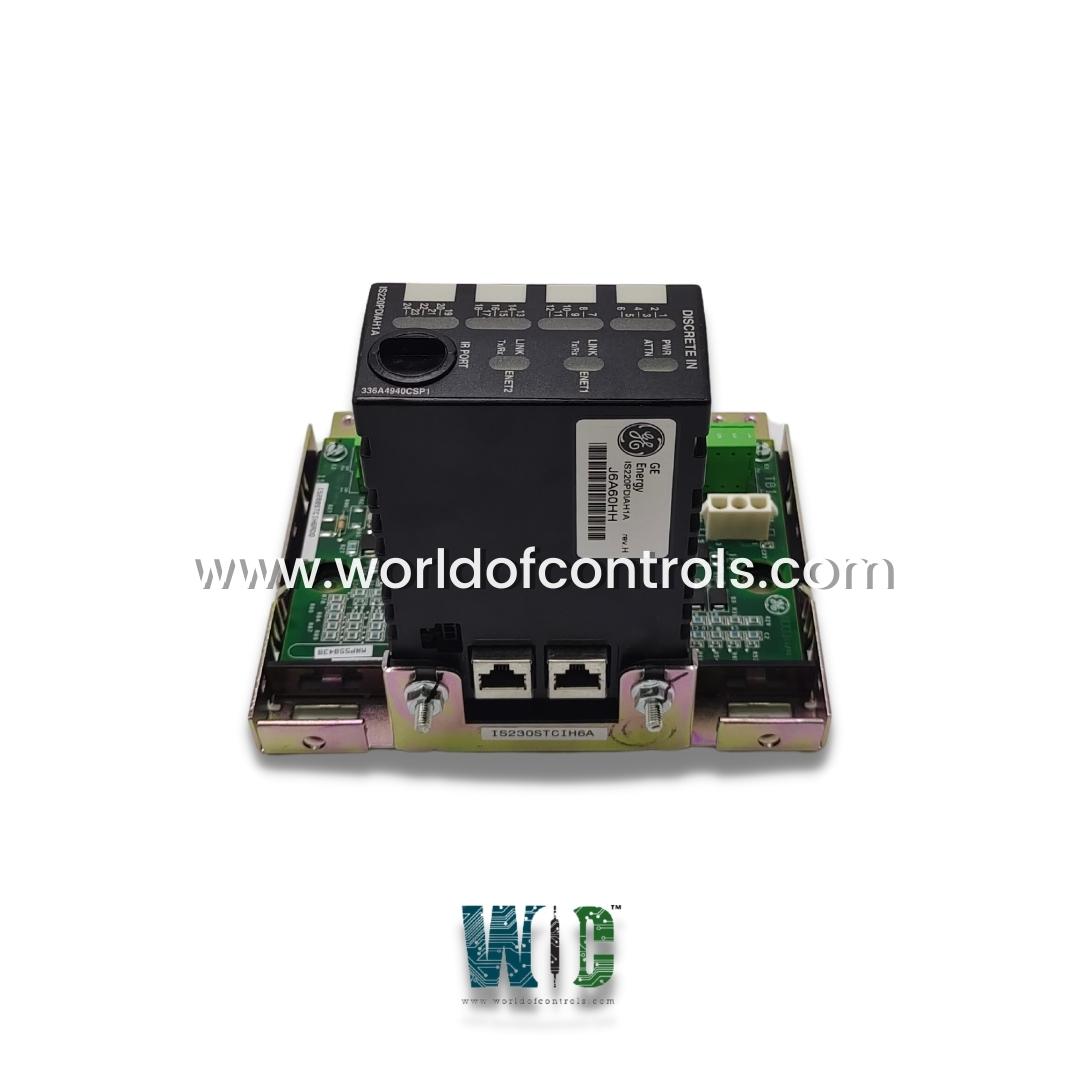
World Of Controls understands the criticality of your requirement and works towards reducing the lead time as much as possible.
IS230STCI2AG01 - Simplex Contact Input Terminal Board is available in stock which ships the same day.
IS230STCI2AG01 - Simplex Contact Input Terminal Board comes in UNUSED as well as REBUILT condition.
To avail our best deals for IS230STCI2AG01 - Simplex Contact Input Terminal Board, contact us and we will get back to you within 24 hours.
SPECIFICATIONS:
Part Number: IS230STCI2AG01
Manufacturer: General Electric
Series: Mark VIe
Product Type: Simplex Contact Input Terminal Board
Number of channels: 24
Input filter: 4 ms
Mounting: DIN-rail mounting
Technology: Surface mount
Operating temperature: -30° to 65°C
Size: 15.9 cm high x 10.2 cm
Repair: 3-7 Day
Availability: In Stock
Country of Origin: United States
Manual: GEH-6721L
FUNCTIONAL DESCRIPTION:
IS230STCI2AG01 is a Simplex Contact Input Terminal Board manufactured and designed by General Electric as part of the Mark VIe Series used in GE Distributed Control Systems. The Simplex Contact Input (STCI) terminal board is a compact contact input terminal board designed for DIN-rail or flat mounting. The STCI board accepts 24 contact inputs that are supplied with a nominal 24, 48, and 125 V DC excitation from an external source. The contact inputs have noise suppression to protect against surge and high-frequency noise. The STCI works with Mark VIe and Mark VIeS systems.
INSTALLATION:
The STCI plus a plastic insulator mounts on a sheet metal carrier that then mounts on a DIN rail. Optionally the STCI plus insulator mounts on a sheet metal assembly that then bolts in a cabinet. The contact inputs are wired directly to the terminal block, typically using #18 AWG wires. Shields should be terminated on a separate bracket.
OPERATION:
The function and on-board signal conditioning are the same as those on TBCI, they are scaled for 24, 48, and 125 V dc excitation. The input excitation range is 16 to 32 V DC, 32 to 64 V DC, and 100 to 145 V DC respectively. The threshold voltage is 50% of the excitation voltage. The contact sensing circuits are displayed in the figure. Contact input currents are resistance limited to 2.5 mA on the first 21 circuits, and 10 mA on circuits 22 through 24. The 24 V DC supply is currently limited to 0.5 A using polymer positive temperature coefficient fuses that can be reset. Filters reduce high-frequency noise and suppress surgeon input near the point of signal entry. The discrete input voltage signals go to the I/O processor which passes them through optical isolators, converts them to digital signals, and transfers them to the controller.
WOC has the largest stock of GE Distributed Turbine Control System Replacement Parts. We can also repair your faulty boards. WORLD OF CONTROLS can also supply unused and rebuilt backed-up with a warranty. Our team of experts is available round the clock to support your OEM needs. Our team of experts at WOC is happy to assist you with any of your automation requirements. For pricing and availability on any parts and repairs, kindly get in touch with our team by phone or email.
What is a Simplex Contact Input Terminal Board?
The Simplex Contact Input Terminal Board is a device used in electrical systems to facilitate the connection of simplex (single) contacts. It provides a convenient interface for integrating and managing input signals from various sources.
How does the Terminal Board work?
The Terminal Board acts as a centralized point where simplex contacts can be connected. It typically has terminals or connectors that allow easy wiring of input signals. These signals can then be used for monitoring or control purposes in a broader electrical system.
What applications is the Simplex Contact Input Terminal Board suitable for?
The board is commonly used in various applications such as industrial control systems, security systems, and automation setups where monitoring or control based on simple on/off signals is required.